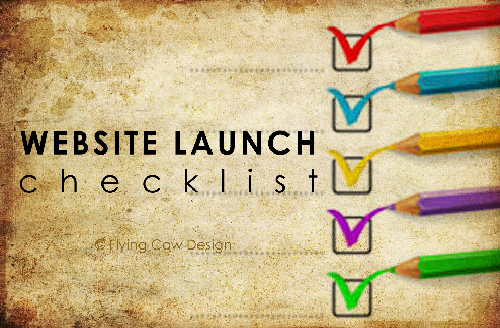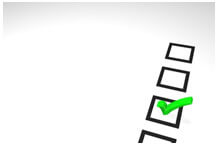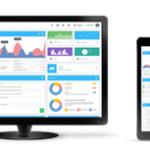Is Your Website Ready for Launch?

A website, whether it is new or old, is highly detailed and should function for readers with a click of a button or mouse. There is a lot going on behind the scenes consistently and the reader should never see this. It takes one mistake for a page to malfunction or a URL to not open and the reader leaves your website. Before you send your website to be launched for the public’s view use this pre-launch checklist to ensure you have not missed anything.
Launching a New Website
A new website gives you the chance to not have to worry about other people’s mistakes or bad pages and URLs. Once you are ready to launch your new website it is vital to check even the smallest of the smallest detail; even one missed character will cause an error page. The following are some things you should take a second or third look at before launching the site:
Simulate Search Engines
Before launching your site, use either an online text browser or disable all scripts on your browser and access your site. This will show you how search engines will see your website. Make sure all your links are crawlable, all your content is visible and there are no search engine roadblocks on your site.
Cross Browser / Platform Compatibility
Test your website on different web browsers, different screen resolutions, and mobile devices to make sure it works consistently. If not this is your chance to go back and fix it. You never get a second chance to create a first impression. If a visitor comes to your site and uses a platform or browser that your site does not show up well on, they will find a competitor to go to instead.
Social Integration
Social Networking is one of the best marketing tools available today. Ensure that you have social integration available on your site and that it is working. Make it easy for your visitors to visit your social profiles and/or share your content.
Image Optimization

Shortcuts are never a good thing when making a website as they often result in errors. Images often suffer because they are usually the last to go on before the deadline. The following is a list to check on images before submitting:
Image Scaling: Make sure the images are actual display size. Sometimes web developers use a program to display dimensions in the HTML code to make larger images show up in the desired smaller size. This makes the page load slower and can have an adverse impact on the site’s performance.
Image File Names: Make sure you are not using file names like IMG123.JPG in your site. Using simple terms that actually describe the image such as, TREE1.JPG, this will help search engines understand the context and relevance of the image.This can help your website in image search results.
ALT Text: The ALT text of an image also helps in establishing context and relevance. Not having meaningful and relevant ALT text for all your images will mean that you do not get the most out of the images on your site.
Captions: Where possible, make sure images have a photo caption that is descriptive and keyword-rich.
Audit your structured data markup
A well optimized website uses structured data markup meaningfully. Different pages and elements of your website can be marked up to better inform search engines about the content. Before launching the site, test the structured data markup using Google’s Structured Data Testing Tool.
Sitemaps
These are often ignored by webmasters and site owners. Make sure your HTML sitemap works and links to all the important pages correctly. Also generate and upload an XML sitemap. If your site has a feed, make sure you also have a sitemap of your feeds.
Custom 404 Error Page.

In spite of the best efforts, it is possible that there could be broken links in your site. These will be intercepted when you do a pre-launch or post-launch technical audit. However, there could be errors that creep in as your site grows in the future. Having a custom 404 error page is a best practice that will make sure that you do not present dead-ends to your site visitors or search engines. It will also eliminate the chance of some of your visitors thinking that the site is down or wound up. You can be creative with your custom 404 error pages, but make sure it carries your website branding, look, and feel and has links to all the important pages in your site.
Meta Robots Tags
Meta Robots tags are used to control what the search engine bots (or robots) can see and access. They can be used to control which links search engines can follow, what content they should index, and what they should archive. It is important to make sure that, even by mistake, the meta robots tags haven’t been set up to prevent search engines from crawling and indexing the content on your website. For extra security, if it is to be kept confidential, one should consider adding a password also.
Audit of Disallows
When a website is being tested and reviewed in a pre-launch or staging environment, it is best practice to disallow the crawling of the site through the robots.txt file. This prevents the search engines from prematurely crawling the site before it is ready to be live. It is a common mistake to forget to remove the “disallow” text before taking the site live. When this happens, search engines do not index the content, hurting the site’s performance. If you have disallowed the crawling of the site through robots.txt, make sure you audit the “disallows” to make sure only the sections of the sites you do NOT want search engines to access have been disallowed.
Technical Audit

If you have a staging version of your website, it is always a good idea to make sure you do a technical audit of the site before launch. There are many free and paid tools for this. Some of the popular ones include Xenu Link Sleuth, Microsoft IIS SEO Toolkit, and Screaming Frog SEO Spider. These tools will help you identify a number of technical issues that may not be visible while you browse through your site. Fixing these issues before launching the website will make sure your visitors and search engines find fewer errors on the site and that will help the site create a better impression and perform better. If it is not possible to audit the site in a staging environment, then this is one of the first things the web development team should do after the site goes live.
Analytics Tracking
Make sure you set up analytics tracking on your website. Google Analytics is free and simple to install on the site. By having analytics in place before launching your site, you will be able to track visitors and their behavior on your website from day one. Analytics let you see how visitors use your site, where they go, how long they are on each page and gives you an idea of how to get them to come back.
Verify and Validate the Site
Make sure your site is verified on Google Webmaster Tools and Bing Webmaster Tools. There are different ways of doing this, uploading a file, adding a meta tag to the home page, etc. When you verify your website, you can track what the search engine sees on your site. This includes errors, when it last accessed your sitemap, what keywords it sees in your content, for what search terms your site came up in search results, and who is linking to your site.
Behind every website there is a lot going on behind the scenes and no customer/visitor should see all that going on. When they visit your page they want to it to run smoothly in their busy life so they can get their information and get on with their day. This is why it is very important for your website team to follow this website checklist and ensure that all steps are checked and double-checked for errors. The merits of investing this extra time before launching your website can exceed far beyond where you thought you might be.
CEO, Flying Cow Design
Attended University of Auckland
Lives in San Francisco Bay Area










